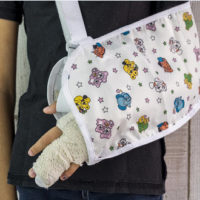Youth Violence

When cell phone video revealed several girls attacking a 14-year-old peer in a Boca Raton park in December 2017, viewers were outraged. Some claim it was a hate crime inspired by Islamophobia; others say it was no more than a tussle over a boyfriend. Whatever the motivation, the images of hair pulling and flying fists are alarming. Charges of battery, at a minimum, are being considered. If the victim were your child, what would your reaction be? A good personal injury attorney might be able to help you weigh your legal options.
Violence Statistics
Sadly, the Boca Raton incident is not an isolated case of youth violence. And in some cases, the attacks are much more serious. A 2016 report on this topic is jaw dropping:
- There were an average of 12 youth homicides every day in 2014;
- The 3rd leading cause of death for individuals aged 14-24 is homicide;
- Over $18 billion is spent annually in medical and work loss costs associated with youth assaults and homicides;
- Almost a quarter of high school students admit to having been in a physical altercation within the past year;
- Almost one out of four high school students reported carrying a weapon at some time in the month prior to the survey.
Factors Impacting Youth Violence
Clearly, America is no stranger to violence among young people. It can occur at any age, and may involve verbal and physical bullying, threats, weapons, or gangs. Studies indicate that certain risk factors may increase the likelihood of violence among children and teens:
- Living in communities with high unemployment and poverty rates;
- Being in neighborhoods with limited cohesion and trust;
- Exposure to violence among adults.
- Experiencing excessive family conflict;
- Associating with peers who express dissatisfaction or anger with violence;
- Personally experiencing any form of violence;
- Having an absence of coping skills, models, and direction while working through life’s challenges.
Protective Factors
While all young people will experience difficulties as they navigate the world, certain protective factors are predictive of their ability to manage problematic incidents without resorting to violence. Some of those factors include:
- A feeling of connectedness and purpose within the community;
- Strong role models;
- Positive family support.
Recourse Following Youth Violence
If your child is the victim of an attack that leads to serious harm or death, you need the help of a professional. At Barbas, Nunez, Sanders, Butler & Hovsepian, our team will pursue justice on behalf of you and your family. Don’t get stuck with medical bills, funeral costs, lost wages, and other expenses as a result of a vicious attack. Contact us in Tampa for a free, personalized consultation.
Resources:
cdc.gov/violenceprevention/pdf/yv-datasheet.pdf
cdc.gov/violenceprevention/pdf/connecting_the_dots-a.pdf
